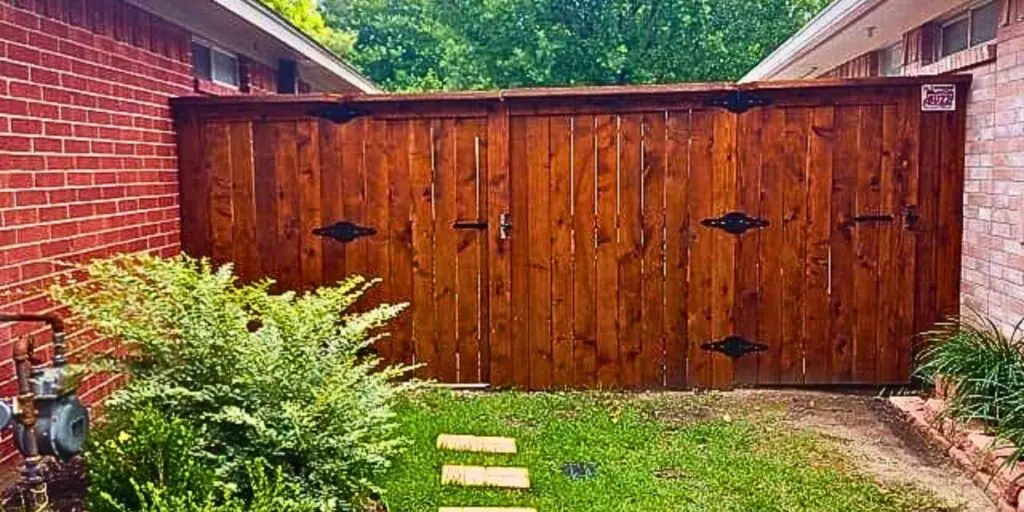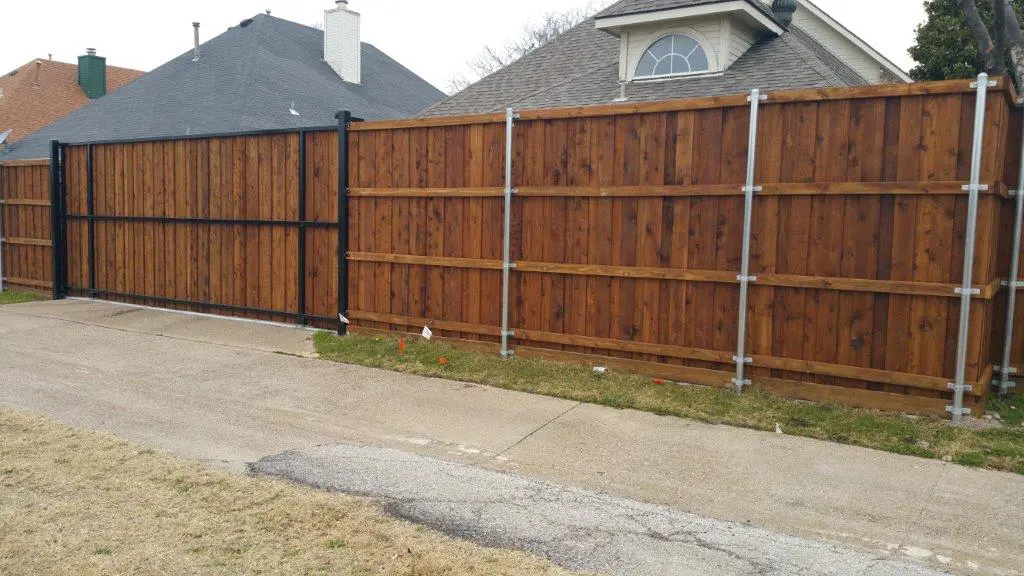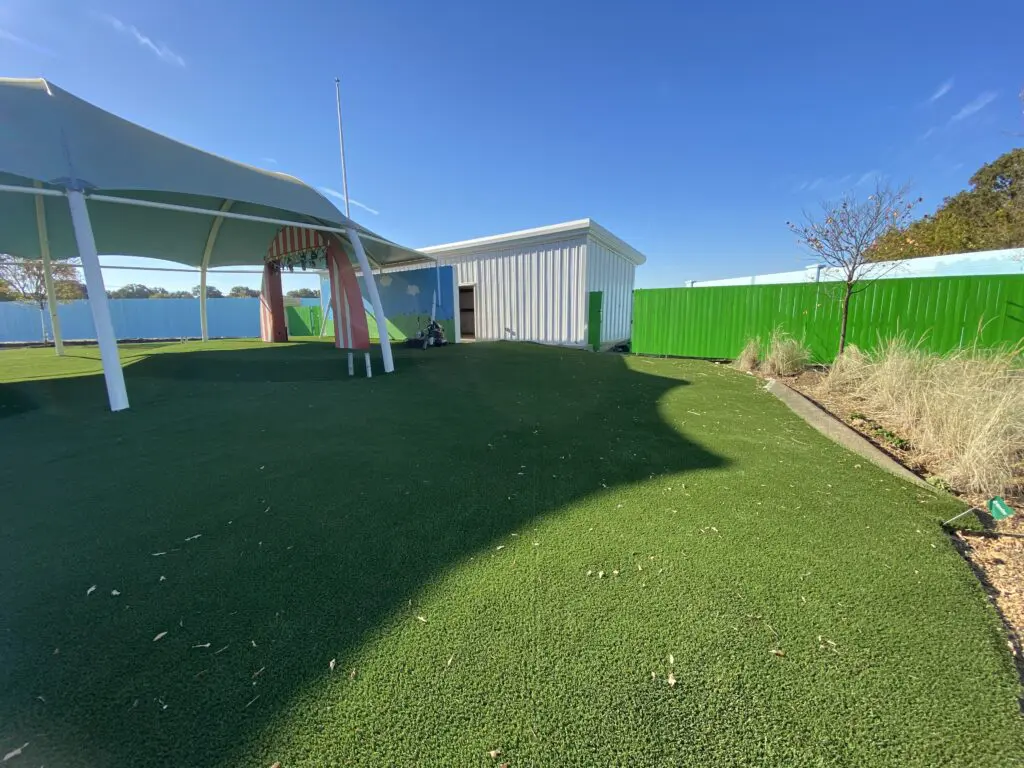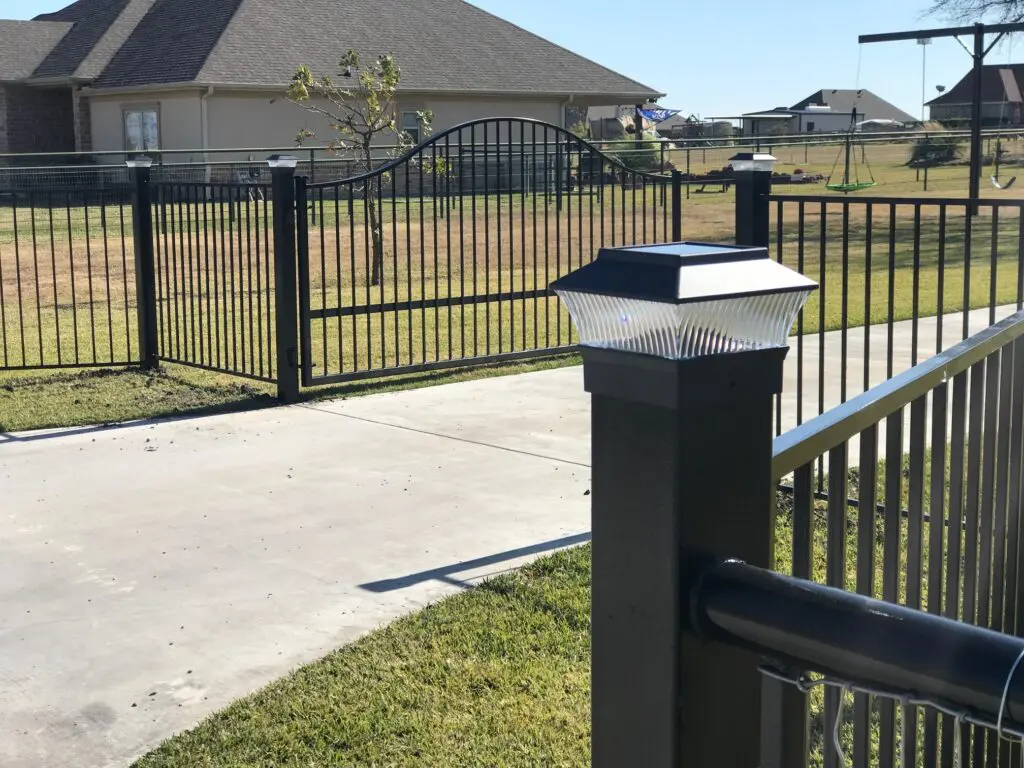It’s a given that staining your fence helps protect wood from wind, rain and insect damage, and preserves the wood’s natural oils and fibers. This is especially vital for spruce fences, which dry out quickly. You can double the life of a spruce fence with proper staining. It is less critical to stain a cedar fence, since cedar’s natural sap offers some protection, but with cedar, too, stain can add years to a fence’s life.
Once you start shopping for a fence, you’ll be faced with what kind of staining process works best: pre-dipped or sprayed. It’s important to get thoroughly schooled in the processes your fence company uses so you can determine what’s best.
Pre-Dipped
At first glance, choosing pre-dipped wood looks like a no-brainer. The wood is dipped in stain before it’s installed, ensuring total wood coverage and sealing and guarding you from overspraying nearby cars, plants, decks, windows and neighbors’ property. Once the fence is up, you’re done—no need to watch the weather to schedule a staining session.
However, you have to be careful when signing up for a pre-dipped fence. Mills ship wood out to lumber vendors while the wood is still wet. You can imagine what happens when wet wood is dipped in oil-based stain: The stain fails to soak in properly. Doing the job of dipping correctly takes time and space. A company needs to wait for the wood to be dry enough before dipping the lumber, then give it time and space for the stain to soak in and the wood to dry before storing it. If you sign up with a fence company that pre-dips quickly and on the cheap, a couple of rain showers can wash off your new fence’s lovely stain.
At Buzz Custom Fence, we pre-dip each picket the right way. We dry the wood until it has a moisture content of no more than 18%. Then each individual picket absorbs the maximum amount of color and oil, protecting your new fence for years to come. We use Wood Defender Stains because we think they’re the best. We pre-dip pickets in Wood Defender’s special formulation for extreme climates, which protects your fence from the Dallas sun.
Sprayed
Spray-staining is another option. If you’re dealing with a company that uses a dubious pre-dipping process, you’ll be safer spraying your fence after it’s installed. Or, better yet, call us!
The trick to spray-staining is picking the right moment. You want your wood to dry to a certain point, but not so long that it starts peeling, warping or cracking. The sweet spot is usually two to four weeks after installation. However, you also have to watch the weather. We already discussed how oil and water don’t mix. So you’ll need to keep an eye on the weather forecast and pick a day when it hasn’t rained for at least 24 hours, and isn’t expected to for at least another 24.
Should you do it yourself?
Probably not, unless you really know what you’re doing. At Buzz, we think it’s a real shame when somebody spends a month’s salary on a beautiful new fence, then ruins it trying to save a couple hundred bucks on a DIY staining project. Professionals know how much stain it really takes to properly seal a fence – you can’t always trust the label on the stain can. Staining a fence can also be a very messy project. When you overspray onto the neighbor’s car, you’ll probably wish you’d left the job to the pros.
However, if you are handy with stain, you can rent a sprayer or use a roller. You want to soak the stain into every crack of the fence.
Ready to move forward with your plans for a new fence? Call Buzz today to talk about dipping, spraying, and all our other favorite fence topics.







